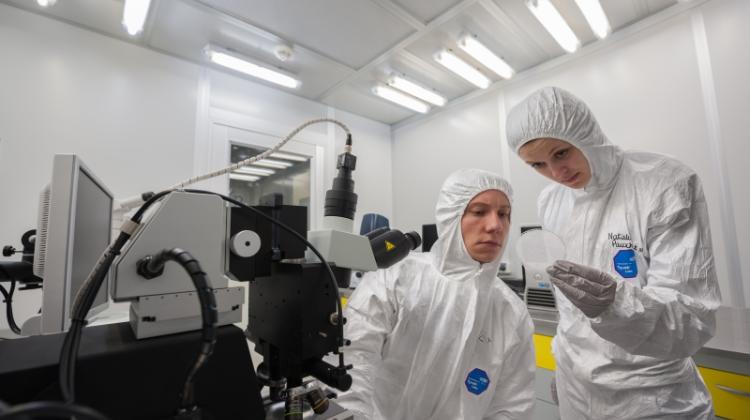A method to detect bacteria resistant to antibiotics

The problem of bacterial resistance to antibiotics is getting more and more serious. It is therefore important that doctors know which medication is most effective against the pathogens that have attacked the patient. Researchers in Warsaw are developing a device that will provide comprehensive data on bacteria.
Due to the increasing resistance of bacteria, the success of treatment of a particular patient increasingly depends on microbiological analyses, based on which hospitals decide on the best treatment. Contemporary analytical instruments, however, provide very limited information on bacteriological susceptibility to drugs.
Meanwhile, BacterOMIC AST, an analytical tool developed in Warsaw, will be the first to allow doctors to obtain complete and accurate data on antibiotic resistance of bacteria attacking a particular patient in just a few hours.
The final research and development and implementation work on the innovative device starts now with the TEAM-TECH grant of PLN 3.7 million granted by the Foundation for Polish Science to the consortium formed by the Institute of Physical Chemistry PAS and BacterOMIC Sp. z o.o., owned by the institutes spin-off company of Scope Fluidics S.A. The Institute of Physical Chemistry PAS reported on the research project in a release sent to PAP.
"According to World Health Organization estimates, in the next 35 years drug-resistant bacteria could lead to the death of up to 300 million people worldwide. This number is impressive. This is no longer a theoretical threat, because if the black forecasts come true, in 2050 one man in a thousand will die because of drug resistance! Each one of us will personally know someone who died only because existing antibiotics have stopped working" - said Prof. Piotr Garstecki from the Institute of Physical Chemistry PAS and BacterOMIC. He pointed out that the sooner the patient gets the right antibiotic, the better.
Current analytical instruments do not provide complete information on bacterial susceptibility, nor do they test the efficacy of drug combinations. In general, these devices test only a few to several antibiotics. In addition, the analysis consists in simply classifying the bacteria as drug resistant or not, or belonging to an intermediate group. Such general data often do not allow physicians to make rational decisions (for example, all antibiotics can be marked as ineffective on antibiogram).
Meanwhile, researchers from Warsaw have designed a device in which a bacterial sample, taken from a patient and diluted, is divided into hundreds of microsamples. Each is placed in one of the microcells on a small, removable, disposable panel. "The plastic panel contains several hundred microcells containing different drugs at different concentrations. After adding the solution with the analysed sample, the bacterial culture is carried out simultaneously in all microcells. After a few hours, our device assesses the development of the colonies and shows the physician not a random, but complete information on the susceptibility of the bacteria attacking the particular patient" - explains the project leader at the Institute of Physical Chemistry PAS, Dr. Tomasz Kamiński.
The large capacity of a single panel in BacterOMIC AST allows to test the efficacy of as many as 97 antibiotics - practically all clinically important ones. The antibiogram is to be not only complete but it should also contain very precise information on the effectiveness of each antibiotic. On this basis, the physician can always rationally construct the optimal therapy for a particular case of infection. "In some of the microcells we also intend to experiment with selected antibiotic mixtures. This will allow to better evaluate the mechanisms of resistance of bacteria. No other currently available laboratory equipment can provide such information" - emphasised Prof. Garstecki.
According to the Institute of Physical Chemistry PAS release, a single Bacteromic AST would allow to conduct analyses on 60 panels at the same time, at a single panel cost similar to that of the existing units. The device, now in its pre-prototype phase, has been tested for the potential for bacterial culturing and monitoring their growth in microcells.
Completion of the prototype construction is scheduled for autumn, after which tests in domestic and foreign laboratories will begin. Researchers expect that the first BacterOMIC ASTs for hospitals and clinics should be available in about four years.
PAP - Science and Scholarship in Poland
lt/ agt/ kap/
tr. RL
Przed dodaniem komentarza prosimy o zapoznanie z Regulaminem forum serwisu Nauka w Polsce.


















